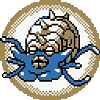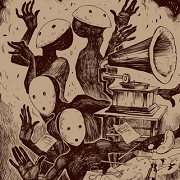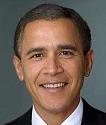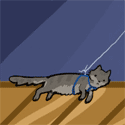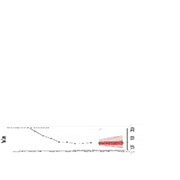(Thread IKs:
PoundSand)
|
I've been spending the whole winter going "as soon as I'm done with x I'm going to call my insurance and get it straightened out so my partner and I can get boosted" and now all of a sudden it's 2024 and we've got 1-2 callouts (or worse, send homes) at work from people being sick every day. I'm sort of paralyzed between wanting to just plunk down money to get shots in our arms at the nearest pharmacy and trying to get it covered by kaiser. I'm not sure if my employment situation is going to remain stable throughout the year so part of me really wants to try and use insurance while I've still got it. 
|
|
|
|

|
| # ? May 25, 2024 19:19 |
|
A Bag of Milk posted:Iota-carrageenan nasal spray and probiotic lozenges containing streptococcus salivarius k12 should be better than nothing even if used after exposure. Getting your hands on either of those within 24hrs if you don't already have them in the medicine cabinet might be hard though. Oh, I totally have those. I've done the spray and two lozenges so far this evening; I'll have another before bed, and I'm about to hit the fancy mouthwash. I also need to find the vitamin D supplements. I have gone four years without even the sniffles. I'm not giving in now.
|
|
|
|
Coworkers dropping like flies for "food poisoning" lately.
|
|
|
|
The sheer number of people at my work who have told me the past two days "Yeah so everybody in my family got sick after christmas" but in a tone that it's nbd and that's normal now. I mean, I guess it is normal now but it shouldn't be. gently caress.
|
|
|
|
Hungry Squirrel posted:Oh, I totally have those. I've done the spray and two lozenges so far this evening; I'll have another before bed, and I'm about to hit the fancy mouthwash. I also need to find the vitamin D supplements. don’t go nuts with the lozenges and give yourself an infection
|
|
|
|
Bold lines in the tables are new since the previous update. Olympic Peninsula & Northwest Wash.  pre:Olympic Peninsula & Northwest Wash. County Shed ID Ref. Date Trend 7-Day Change Jefferson PT (1) Dec-27 UP + 15% Mason n/a (1) Dec-23 UP +180% Skagit ANA (1) Dec-28 UP + 50% Skagit MV (1) Dec-28 UP + 85% Whatcom LYN (1) Dec-28 UP + 55%  pre:North Puget Sound [1 of 2] County Shed ID Ref. Date Trend 7-Day Change Island COUP (1) Dec-29 UP +160% Island OH (1) Dec-29 UP +140% Snohomish ARL (1) Dec-26 UP + 45% Snohomish EVR (1) Dec-27 UP + 15% Snohomish STAN (1) Dec-27 UP +100% Snohomish 256 (3) Dec-27 UP +270% <- !!  pre:North Puget Sound [2 of 2] County Shed ID Ref. Date Trend 7-Day Change King BWT (1) Dec-27 UP +110% King KCS (1) Dec-27 UP + 55% King WSPT (1) Dec-26 STEADY ± 2%  pre:South Puget Sound & Southwest County Shed ID Ref. Date Trend 7-Day Change Clark MRPK (1) Dec-27 UP + 45% Clark SNCK (1) Dec-28 UP + 55% Clark VWS & 2534 (1)&(2) Dec-27 UP + 50% Lewis n/a (1) Dec-23 UP + 15% Pierce CC (1) Dec-29 UP +240% <- !! Pierce PUY (1) Dec-28 DOWN - 10% Thurston LOTT (1) Dec-27 UP + 50%  pre:North & South Central Wash. County Shed ID Ref. Date Trend 7-Day Change Benton WRCH (1) Dec-28 DOWN - 85% Chelan WEN (1) Dec-28 UP + 30% Grant EPH (1) Dec-27 UP + 50% Kittitas ELL (1) Dec-28 UP + 30% Okanogan BRW (1) Dec-28 UP + 80% Yakima YAK (1) Dec-28 UP + 60%  pre:Northeast & Southeast Wash. County Shed ID Ref. Date Trend 7-Day Change Franklin PAS (1) Dec-29 UP + 70% Spokane RP (1) Dec-29 UP + 70% Spokane SPK (1) Dec-29 UP + 70% Walla Walla WALLA (1) Dec-28 DOWN - 15% Whitman PLM (1) Dec-29 UP + 25%
Solid lines are generated from normalized and smoothed data provided by the Washington State Department of Health (WADoH Ref. (1) ), Verily/WastewaterSCAN (WWS Ref. (3) ), and Biobot (Ref. (4) ). White diamond dots are from most recent CDC/NWSS (Ref. (2) ) data scaled to supplement missing or out-dated data when available. Because each of these four groups use different normalization methods, different smoothing methods, and different averaging/location identifiers, the concentration of virus is not comparable between locations. See reference links at the bottom of this post for more details. There are 33 sewersheds distributed across 6 charts grouped by region then alphabetized by county and sewershed. The tables below contain WADoH or NWSS/WSS IDs (to match their respective dashboards), Date last sampled, Trend (based on the change between the averages of the two most recent weeks), and 7-Day Change (approx. amount the trend has increased or decreased). All data presented are smoothed in some degree to even out inconsistent sampling dates and extreme highs and lows. Most sewersheds are sampled 1-3 times a week and are published within a week. Some locations are late reporting by 10 days or more so be sure to note your sewershed's Date in the table or graph. Locations that are more than two weeks old will have n/a listed under Trend to indicate there it is out of date.
|
|
|
|
Hungry Squirrel posted:Oh, I totally have those. I've done the spray and two lozenges so far this evening; I'll have another before bed, and I'm about to hit the fancy mouthwash. I also need to find the vitamin D supplements. where’d you get the lozenges? I spent like 45 minutes staring at the wall o’supplements/probiotics in Whole Foods and nada.
|
|
|
|
Zantie posted:Bold lines in the tables are new since the previous update. Sure okay, so most of these are up. But that is a purely quantitative analysis. Any increase must be compensated fully and then some, by what we can surmise is 100% qualitatively true: the inherent mildness. Thus actually making for a sustained drop across board. That's just science.
|
|
|
|
Happy to report that covid is finally over again: After the precipitous fall towards the end of the year wastewater concentration now hit new lows, just above the highest previous peak. Though curiously we hit max covid two weeks before the holidays started, so lmao to any kind of predictability. Maybe all the company christmas parties?
|
|
|
|
genericnick posted:(..) I think in Denmark too many people got too many diseases to keep it up, as all the diseases seemingly started dropping at the same time. Which was the week before Christmas and the week after the "20-30% of Danes currently sick" quote I posted a few weeks back. Literally: 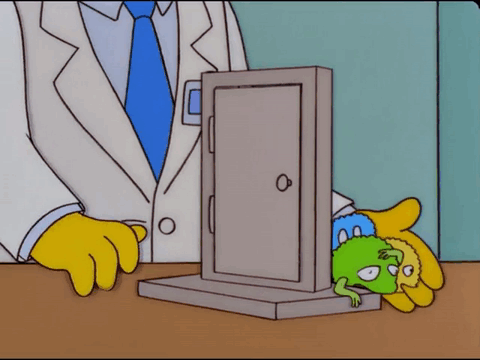 Edit to add the current status of respiratory diseases in Denmark. Note that the lowest R0 diseases started dropping a couple of weeks before the big dogs: COVID Daily new hospitalizations:  Cases capped out week 50-51, dropped week 52. Influenza A+B Weekly new hospitalizations by season:  Cases dropped ~1/3 between week 51 and 52. RSV Weekly new hospitalizations by season:  Cases capped out week 50-51, dropped week 52. Mycoplasma Weekly cases this season:  Weekly cases over time:  Cases capped out week 49, then started dropping. Pertussis Weekly cases last year:  Monthly cases over time:  Capped out week 48, then started dropping. Pingui has issued a correction as of 13:22 on Jan 4, 2024 |
|
|
|
Oracle posted:where’d you get the lozenges? I spent like 45 minutes staring at the wall o’supplements/probiotics in Whole Foods and nada. BLIS ThroatHealth Oral Probiotics, Most Potent K12 Probiotic Formula Available, 2.5 Billion CFU, Throat Immunity Support and Oral Health for Adults and Kids, Sugar-Free Lozenges, 30 Day Supply https://a.co/d/6jezVO5
|
|
|
|
I don't think you are supposed to say that. https://twitter.com/mvankerkhove/status/1741384952850125163 Nitter link to the whole thread: https://nitter.net/mvankerkhove/status/1741384952850125163 This particular tweet deserves highlighting: https://twitter.com/mvankerkhove/status/1741384975390318696#m Pingui has issued a correction as of 13:37 on Jan 4, 2024 |
|
|
|
Monoclonal antibody treatment for pre-exposure (e.g. a potential Evusheld replacement) submitting EUA request:https://www.cidrap.umn.edu/covid-19/invivyd-submits-emergency-use-request-covid-preventive posted:Invivyd submits emergency use request for COVID preventive
|
|
|
|
Pingui posted:This particular tweet deserves highlighting: yep we are never updating the name. one of the lessons of modern pandemic management
|
|
|
|
Pingui posted:Monoclonal antibody treatment for pre-exposure (e.g. a potential Evusheld replacement) submitting EUA request: How can you have emergency requests when there is no emergency?
|
|
|
|
bedpan posted:yep we are never updating the name. one of the lessons of modern pandemic management To be fair, what would you name at this point:  it's a soup
|
|
|
|
genericnick posted:To be fair, what would you name at this point: The BA.2.86 children are rocking the competition worldwide:  One a related note, I think Raj is cracking. https://twitter.com/RajlabN/status/1741547431597424710#m Pingui has issued a correction as of 13:58 on Jan 4, 2024 |
|
|
|
genericnick posted:To be fair, what would you name at this point: omega, obviously. since it is the last and weakest of the variants.
|
|
|
|
Oh lmao, I was curious and went to check out the CDC variant graph. They still haven't updated since Christmas?
|
|
|
|
Holiday vacay and sickness sabbatical season. Won't see updates until like mid month I bet lol.
|
|
|
|
bedpan posted:yep we are never updating the name. one of the lessons of modern pandemic management She just said they will update if needed. Like if people didn't take a currently dominating variant seriously because the WHO hadn't given it a Greek letter, they would simply update to give it one. Without hesitation. Pingui has issued a correction as of 14:08 on Jan 4, 2024 |
|
|
|
NeonPunk posted:Oh lmao, I was curious and went to check out the CDC variant graph. They still haven't updated since Christmas? Eric Crackl-Ping was complaining about this yesterday https://x.com/drericding/status/1742666257801875848?s=46&t=f1MRhF2xe8gNhr6WGxk_NA
|
|
|
|
https://twitter.com/sandervdraadt/status/1742669547025420565
|
|
|
|
imagine
|
|
|
|
imagine there's no covid it's really hard to do
|
|
|
|
genericnick posted:Happy to report that covid is finally over again: /Austalianishly: Monumental drop off in cases just before Christmas, you say? Hold my beer ......  https://nitter.net/dbRaevn/status/1742291551018263037#m D'OH
|
|
|
|
Very thorough study trying to determine the cause of post-exertional malaise (PEM), as well as defining the condition in biological terms. I have tried cutting it down as much as I could (still a bit unsure if I should have kept the amyloid deposit stuff in; I'll just note that they were outside the vessels indicating they didn't form microclots), but nevertheless it is pretty long. Pretty pictures though and that's gotta count for something :P "Muscle abnormalities worsen after post-exertional malaise in long COVID" https://www.nature.com/articles/s41467-023-44432-3 posted:Abstract News article on the matter: https://www.theguardian.com/world/2024/jan/04/people-with-long-covid-should-avoid-intense-exercise-say-researchers posted:Long Covid causes changes in body that make exercise debilitating – study Results relate to the study posted here: Pingui posted:(..) Pingui has issued a correction as of 15:18 on Jan 4, 2024 |
|
|
|
Snowglobe of Doom posted:/Austalianishly: Monumental drop off in cases just before Christmas, you say? Hold my beer ...... Woah! Almost wiped it out!
|
|
|
|
covid
|
|
|
|
genericnick posted:To be fair, what would you name at this point:  Sigma variant
|
|
|
|
Pingui posted:Very thorough study trying to determine the cause of post-exertional malaise (PEM), as well as defining the condition in biological terms. I have tried cutting it down as much as I could (still a bit unsure if I should have kept the amyloid deposit stuff in; I'll just note that they were outside the vessels indicating they didn't form microclots), but nevertheless it is pretty long. Pretty pictures though and that's gotta count for something :P Resting for a month after your infection advice still applies. I wonder what's the best way to call this kind of thing, mitochondria injury?
|
|
|
|
NeonPunk posted:Resting for a month after your infection advice still applies. I wonder what's the best way to call this kind of thing, mitochondria injury? Mitochondrial dysfunction (is the term) is a part of it, but not to exclusion it seems. At the very least some kind of inflammation seems present. I didn't include it in the post, but the authors were not able to distinguish if people had persistent (or just prior) infections, which is certainly present in some people and could be causing continual inflammation. Either way, it is a big step and any study showing measurable biomarkers is extremely important to further define and refine the condition.
|
|
|
|
Dren posted:Eric Crackl-Ping was complaining about this yesterday And the CDC NWSS wastewater level data was updated on 12/28 (just under a week ago), for wastewater collected on 12/23. That's better than Biobot, which last updated on 12/23 for wastewater collected on 12/18. I wouldn't complain if they had more frequent updates, but it seems silly to accuse them of taking extended vacations.
|
|
|
|
It's fine to complain. I mean if the states gave forest fire fighters a week vacation off for 4th of July, I would also be complaining.
|
|
|
|
Wildfires are endemic.
|
|
|
|
Zantie posted:North Puget Sound [2 of 2] What I love about the Kent to Sammamish watershed graph is that its pretty much been sitting around peak levels since the beginning of November, except in the last few weeks where that peak has been blown out in favor of a new, much higher peak. So now retroactively it looks like the past two months was only medium-bad. Feels like a synecdoche for our contemporary age!
|
|
|
|
NeonPunk posted:It's fine to complain. I mean if the states gave forest fire fighters a week vacation off for 4th of July, I would also be complaining.
|
|
|
|
UP(!!)
|
|
|
|
Phlag posted:I guess, but my point is that so far they're adhering to their established schedules, with no vacation-related delays at all It's not like winter has never been known to be famously known for spread of illness. It's just a example of institutions crumbling down if they can't even schedule staffs to work during one of the most important time of the year that the very institution is supposed to serve a role in.
|
|
|
|

|
| # ? May 25, 2024 19:19 |
|
Bruce Hussein Daddy posted:UP(!!) covid is playing chess and just made a brilliant move !
|
|
|






